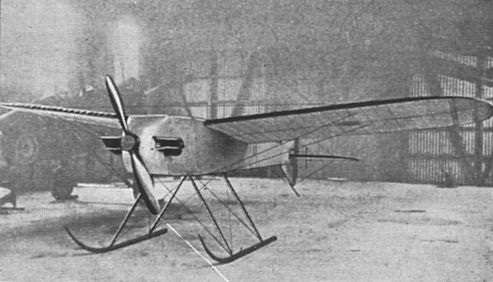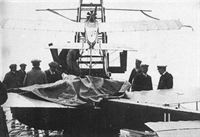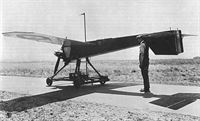
Фотографии
-
Aeroplane Monthly 1988-07 / D.Allen - Pilotless Pioneers
The chordwise lines under the wings are aerial wires, not ribs - others were located on the fuselage sides. Interference from the ignition system was a problem.
-
Aeroplane Monthly 1988-07 / D.Allen - Pilotless Pioneers
View of a 1917 Royal Aircraft Factory AT, powered by a 35 h.p. ABC Gnat flat twin engine.
-
Aeroplane Monthly 1988-07 / D.Allen - Pilotless Pioneers
AT No 11 on its handling trolley. First launch attempts were made from HMS Argus on July 12 and August 31, 1922.
-
Aeroplane Monthly 1988-07 / D.Allen - Pilotless Pioneers
An AT on its launcher aboard HMS Stronghold - AT No 11 may be seen in the foreground.
-
Aeroplane Monthly 1988-07 / D.Allen - Pilotless Pioneers
An AT caught at the moment of launch.
-
Aeroplane Monthly 1988-07 / D.Allen - Pilotless Pioneers
AT No 10 being retrieved following a sea landing.
-
Aeroplane Monthly 1988-07 / D.Allen - Pilotless Pioneers
The RAE 1922 AT was powered by a 45 h.p. Siddeley-Deasy Ounce engine. This AT had no undercarriage and was launched from a simple track aboard HMS Argus and, later, HMS Stronghold.
-
Aeroplane Monthly 1988-07 / D.Allen - Pilotless Pioneers
This Royal Aircraft Establishment side elevation of an Aircraft Target (AT) is dated February 28, 1917.







